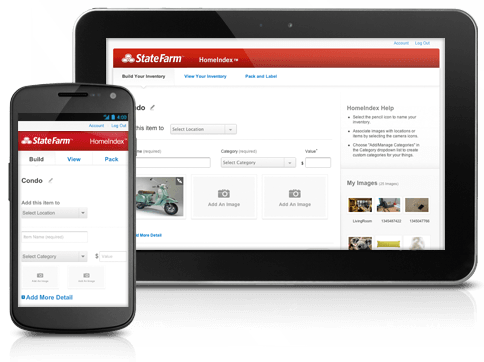Improve User Experience with Cutting-Edge Mobile Optimization
Wiki Article

The Ultimate Overview to Mobile Optimization: Techniques for Enhancing Site Performance on Smartphones and Tablets
The approaches for enhancing internet site performance on mobile systems go beyond mere adjustment; they encompass an extensive approach that entails receptive layout, rate optimization, material strategies, and user experience improvements. By delving into the complexities of mobile optimization, organizations can not only meet user assumptions but also stay ahead in an affordable electronic landscape.Value of Mobile Optimization
Mobile optimization plays an essential function in improving individual experience and driving conversion prices in the ever-evolving electronic landscape. With the raising use mobile phones and tablets for browsing the internet, guaranteeing that internet sites are enhanced for mobile phones has become important for organizations - Mobile Optimization. A mobile-optimized website not only adjusts perfectly to various screen sizes but additionally loads swiftly, supplying customers with a smooth and enjoyable searching experienceIn today's hectic world, customers anticipate instant access to details on the go. A web site that is not optimized for mobile devices threats losing potential consumers because of slow down packing times or a bad customer interface. By buying mobile optimization, businesses can satisfy the requirements of their mobile audience, causing greater involvement and enhanced conversions.
Furthermore, search engines like Google focus on mobile-friendly internet sites in their rankings, making mobile optimization important for improving exposure and attracting organic traffic. Mobile Optimization. Generally, the significance of mobile optimization can not be overstated, as it directly impacts user contentment, conversion prices, and overall business success in the electronic realm
Responsive Layout Strategies
Carrying out responsive layout strategies guarantees that websites dynamically change their design and material based on the user's gadget display dimension, giving a constant individual experience across numerous systems. One of one of the most usual methods used in responsive layout is developing fluid grids that enable material to resize proportionally to the display dimension. This guarantees that aspects on the website preserve their relative spacing and arrangement, optimizing the watching experience for users on various gadgets.In addition, making use of versatile photos that can scale with the dimension of the viewport aids avoid images from being cropped or misshaped on smaller displays. CSS media inquiries play a vital function in receptive style by allowing developers to apply certain styles based on the tool qualities such as display width, height, and orientation. By leveraging media queries, websites can adapt their design and design to suit mobile phones, tablet computers, and desktop computer screens seamlessly.
Integrating responsive layout techniques not only enhances user experience yet likewise adds to enhanced internet search engine positions, as online search engine like Google prioritize mobile-friendly web sites in their mobile search engine result. By accepting responsive design, web sites can accommodate the varied needs of users accessing content on a variety of devices, inevitably driving interaction and conversions.
Rate and Performance Optimization

One trick strategy is optimizing photos and multimedia material to decrease file sizes without compromising quality. Compressing pictures, leveraging contemporary picture styles like WebP, and careless filling offscreen pictures work useful content approaches to quicken load times (Mobile Optimization). Decreasing HTTP demands, leveraging web browser caching, and decreasing server reaction times are critical steps in improving performance.
Implementing a web content distribution network (CDN) can likewise considerably improve internet site speed by distributing content throughout numerous servers internationally, reducing latency for individuals accessing the website from various areas. Focusing on essential above-the-fold material and postponing non-essential scripts can additionally improve regarded efficiency. By concentrating on rate and performance optimization, sites can supply a seamless and rewarding customer experience on smart phones.
Mobile-Friendly Web Content Methods
Mobile-friendly web content approaches entail tailoring the presentation of details to suit the smaller sized displays and on-the-go nature of mobile phone and tablet computer users. Additionally, breaking up content into much shorter paragraphs and making use of bullet factors can assist improve readability and make it much easier for customers to consume details rapidly.Incorporating interesting visuals, such as images and videos enhanced for mobile watching, can likewise enhance the overall user experience. These visuals ought to be relevant, top quality, and load quickly to avoid customers from wearying. Incorporating interactive elements like tests, surveys, or studies can increase user involvement and urge active engagement.
Customer Experience Enhancements
Building on the structure of mobile-friendly web content methods, boosting user experience requires enhancing every touchpoint to make certain seamless interaction and fulfillment for mobile customers. One critical element of boosting individual experience on smart phones is making certain quick filling times. Individuals anticipate internet sites to load rapidly on their smart devices and tablet computers, and any hold-ups can bring about aggravation and raised bounce prices. Implementing receptive layout is another vital variable in boosting user experience. Responsive layout ensures that websites adjust to various display dimensions and resolutions, supplying a regular and user-friendly experience across various gadgets.Enhancing forms for mobile individuals by lessening the number of areas and using auto-fill attributes can additionally enhance the overall customer experience. By concentrating on these individual experience improvements, internet sites can effectively engage and keep mobile visitors.
Conclusion
To conclude, mobile optimization is important for improving website performance on smart devices read this article and tablets. read the full info here By executing receptive layout techniques, optimizing rate and efficiency, producing mobile-friendly web content, and improving user experience, companies can properly get to and involve with their mobile target market. It is important for sites to adjust to the raising mobile usage patterns in order to remain competitive in the digital landscape.Report this wiki page